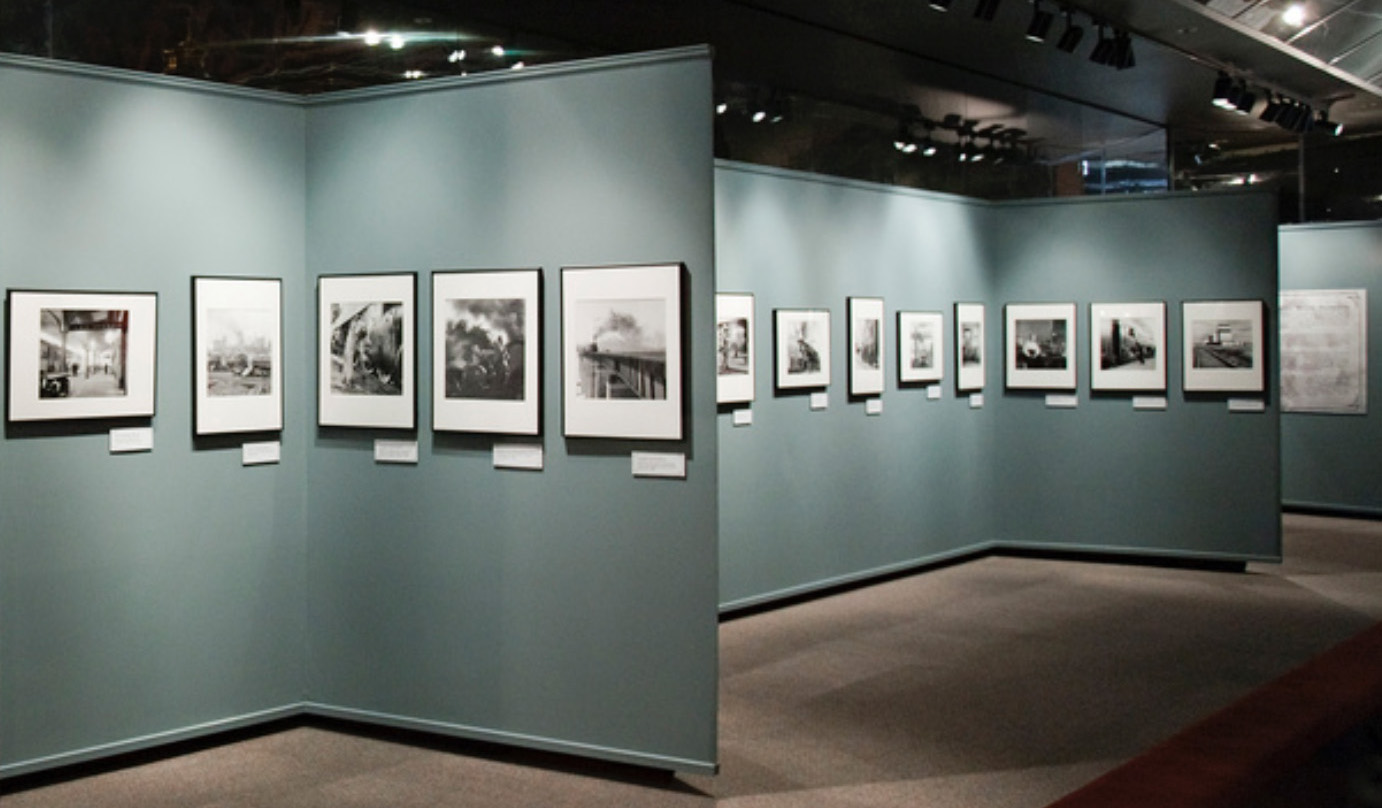ON MAY 10, 1869, TWO RAILROADS—built with haste, hope, and aspiration—joined in a lonely desert of northern Utah, at a place called Promontory. On that day, dignitaries from both companies—the Central Pacific, which had built from California, and the Union Pacific, which had built from the east—gave speeches and installed ceremonial last spikes. The ceremonies were meant as a moment of self-congratulation, but the significance of the day’s events is far broader. In the ensuing decades, railroad after railroad proposed new, competing transcontinental routes—and sometimes completed them. Their construction swept away the dominance of native tribes, ended the open range, and restructured the West into a network of resources and industries dependent upon clusters of urban centers. To mark the 150th anniversary of the beginning of this era, the Center for Railroad Photography & Art has launched a special project, After Promontory: 150 Years of Transcontinental Railroading. Our initiative includes a book, conference, and traveling exhibitions that examine the significance and lasting impact of the transcontinental railroads on the American West. In compliment to many of the sesquicentennial exhibits and events planned throughout the West in 2019, After Promontory takes a wide view, considering the events at Promontory to be the start of a larger phenomenon, an entire era of transcontinental railroad construction that stretched for nearly fifty years. At its core is the assertion that, collectively, the transcontinental railroads profoundly reshaped the human geography of the West, giving birth to the region we recognize today.
See After Promontory featured in the PBS special The Future of America’s Past: Transcontinental, aired on March 23, 2020
Buy the book. The Center has partnered with Indiana University Press to publish a lavishly-illustrated, 10×10-inch hardcover book featuring 240 photographs and five scholarly essays in 320 pages.

Union Pacific, east of North Platte, Neb., 2013, Union Pacific Railroad. Photograph by Drake Hokanson
PHOTOGRAPHY IS After Promontory’s literal and metaphorical lens on the transcontinental railroad boom. Both the book and the exhibition feature period photographs by some of the most accomplished photographers in the nation’s history, artists such as William Henry Jackson, Timothy H. O’Sullivan, and Carleton E. Watkins. Their photographs were often created with the sponsorship of the railroads, whose leaders saw photography as a medium suitable for lobbying a distant population (and distant political leaders) on the need for public support and assistance. Also included in the book and exhibit is recent photography from artists who explore the lasting impact the railroads have had on the landscape, both to the benefit and the costs of the region. At stake in all of these images, both period and more contemporary, is not only the railroad itself as a subject, but how photographers of different eras, with different motivations and different sensibilities, have thought of the transcontinental railroads and their legacy. Expanding on the visual themes in the exhibit, the book offers a deeper look at the circumstances, histories, and impacts of the railroads that came to connect the Midwest with the Pacific Coast. Essays by railroad historians Keith L. Bryant, H. Roger Grant, Don Hofsommer, and Maury Klein add context and depth to the 240 photographs featured in book. Robert D. Krebs, who served in the executive offices of railroads in all three regions, including as chairman and CEO of the BNSF Railway, wrote the foreword. Photographer Drake Hokanson, in the book’s concluding essay, reflects on photographing the transcontinental railroads then and now, and what these images can teach us. Promontory was an inflection point in the history of the American West—as well as the country as a whole—a moment that both symbolically and literally gave birth to a region of measurement, colonization, and extraction, to what historian Donald Worster has called “the engineered West.” After Promontory explores how photographic artists have received and represented that West both in the era of the transcontinentals, and in the region they have left us to inhabit. Contributing authors Keith L. Bryant, H. Roger Grant, Don Hofsommer, Drake Hokanson, Maury Klein, Robert D. Krebs Contributing artists Historic: E. & H. T. Anthony, William F. Boyd, James J. Cawthorn, Cobb Studios, Asahel Curtis, George B. Davies, H. J. English, Alexander Gardner, Alfred A. Hart, F. Jay Haynes, John K. Hillers, William Henry Holmes, A.J.M. Holzman, Eliot W. Hunter, William H. Jackson, Fred Hueston Kiser, A. J. McDonald, Edweard James Muybridge, Timothy H. O’Sullivan, Royal A. Prentice, Riehle Studios, Andrew J. Russell, Sanders, Carleton E. Watkins, George Ben Wittick, and Ella Wormser Contemporary: Wallace W. Abbey, Lewis Ableidinger, Ted Benson, John F. Bjorklund, Jeff Brouws, Wayne Depperman, McNair Evans, Philip Hastings, Drake Hokanson, Joel Jensen, Stan Kistler, Stuart Klipper, Richard Koenig, J. Parker Lamb, Scott Lothes, Mel Patrick, Alex Ramos, Mark Ruwedel, John Sanderson, Jim Shaughnessy, Fred M. Springer, Richard Steinheimer, David Styffe
Support this project. You can help the Center mark this milestone in railroad history by making a special gift to support After Promontory. Book an exhibition. Multiple stagings of After Promontory are available to travel in 2019 and beyond. Download the Prospectus to learn more, or get in touch with the Center at: Past Venues
info@railphoto-art.org
608-251-5785
Selected images from After Promontory
With gratitude to our sponsors
After Promontory would not be possible without the support of The Tom E. Dailey Foundation, T. Bondurant “Bon” French,
The Grainger Foundation, The Railway & Locomotive Historical Society, Fred and Dale Springer, Richard and Caroline Tower,
and our members and volunteers.
To everyone who has donated to this project, our sincere thanks.

